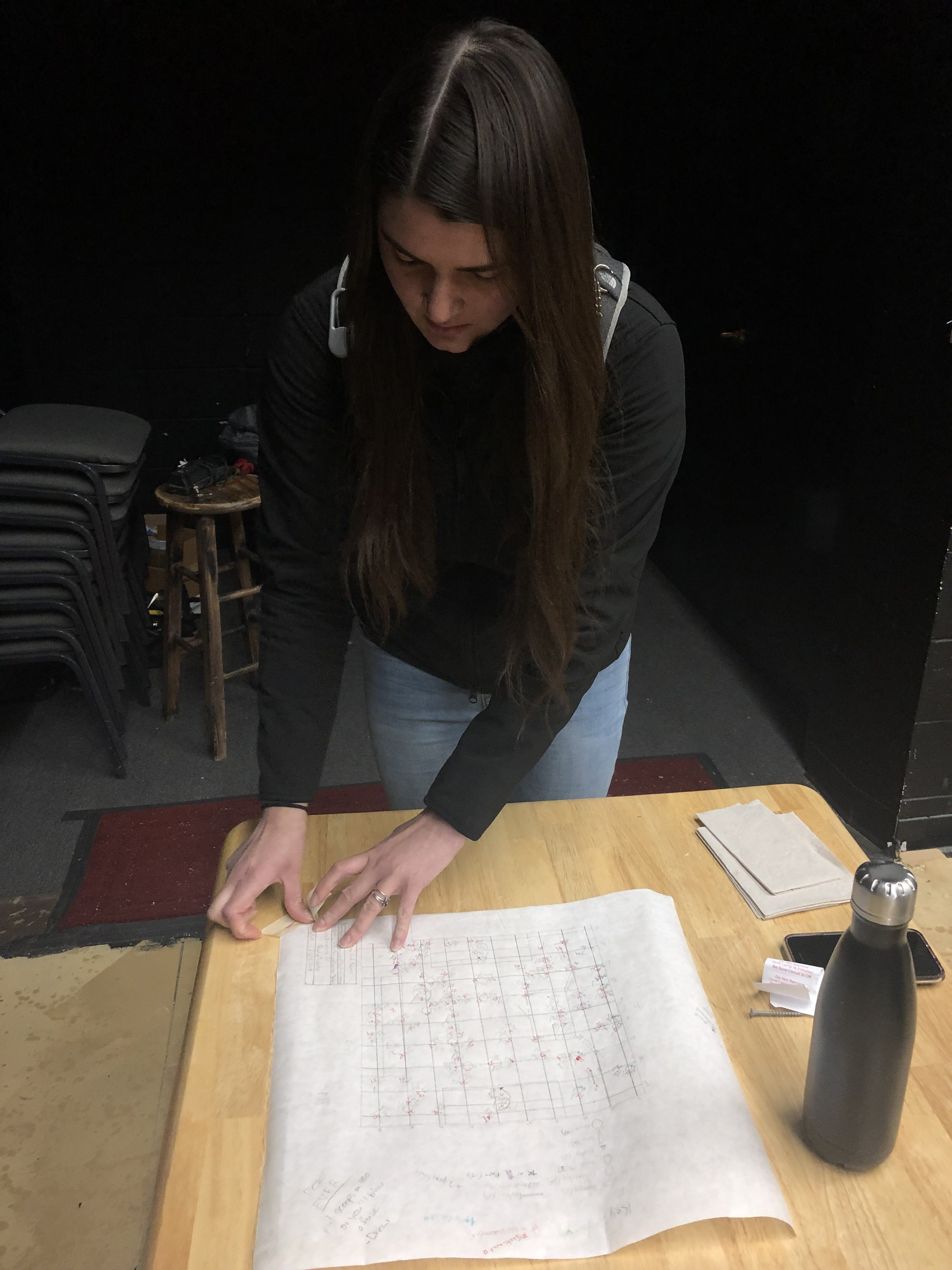
Designing for a theatrical production can be challenging. Designing something that isn’t tangible can be even tougher. The Scoop sat down with Claire Allen, the lighting designer for the upcoming Medeival Farces at Drury University, and asked her, “How do you design lights for a show?”
- Read the script
“The first time I read the script, I read to get a feel for the mood and the characters” said Allen
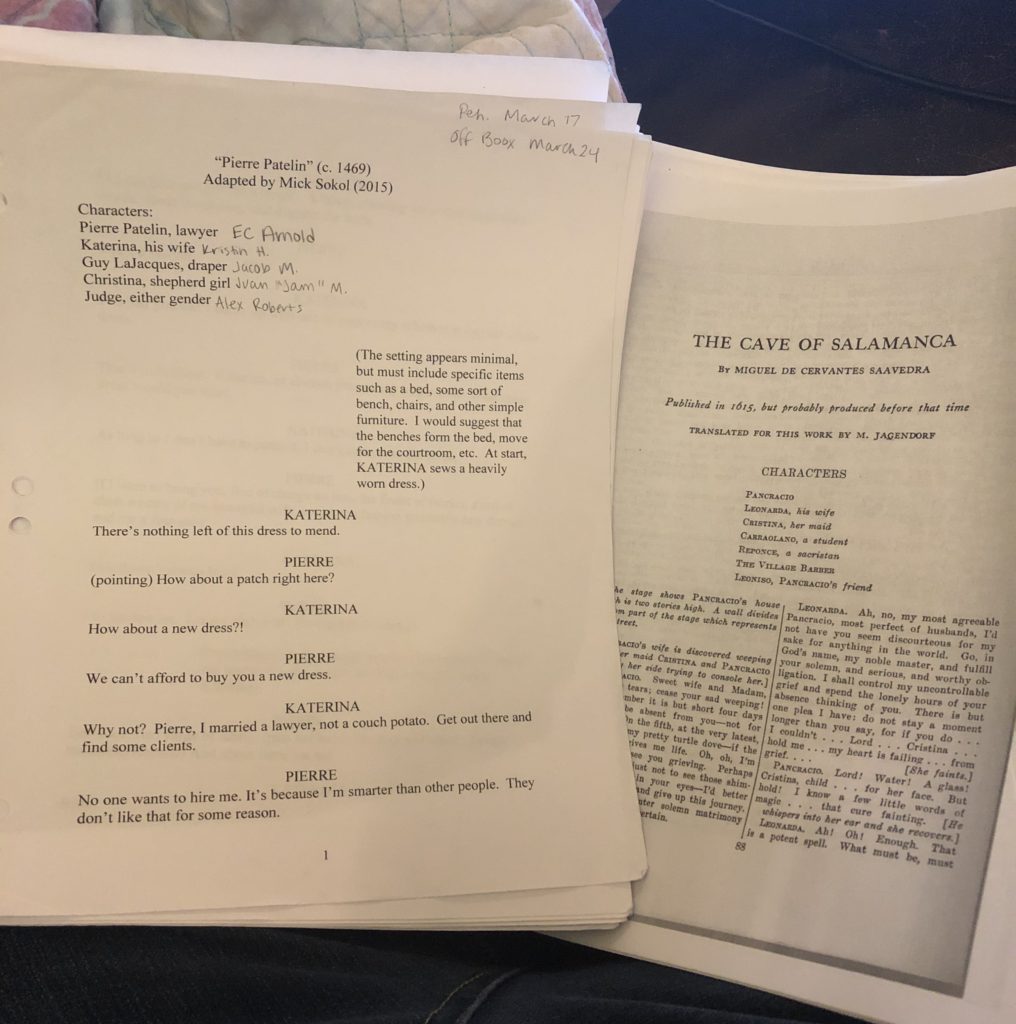
2. Read the script again
“This time I pay more attention and take notes on technical ideas”
3. Create a preliminary design
“This is about getting your [the designer’s] ideas across to the director” “For other designs you can have something drawn or written out, but for lighting you come up with pictures and words to describe your ideas” This is the time to talk with the director and adjust things before creating your final design.
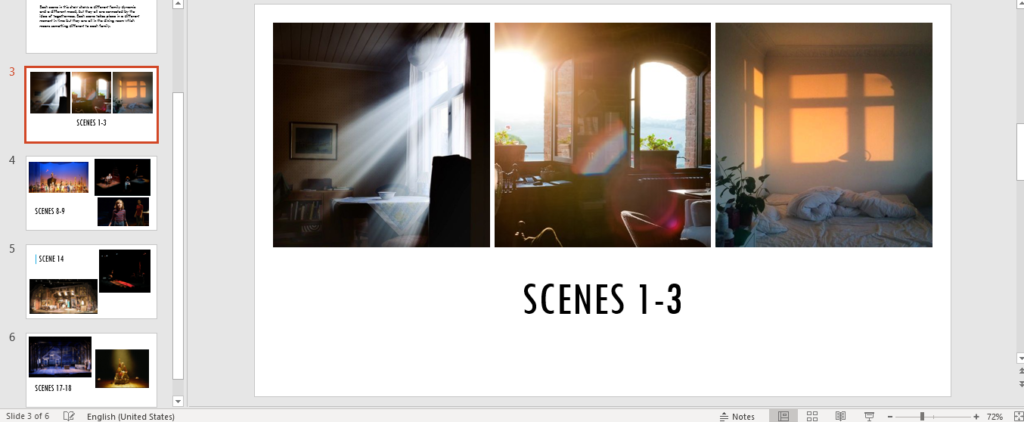
4. Create the final design
This is the final step before your design turns into reality. “You start thinking about how you are logistically going to do that, which lights you need and where you need them” “The ideas you develop here will correlate with the light plot”
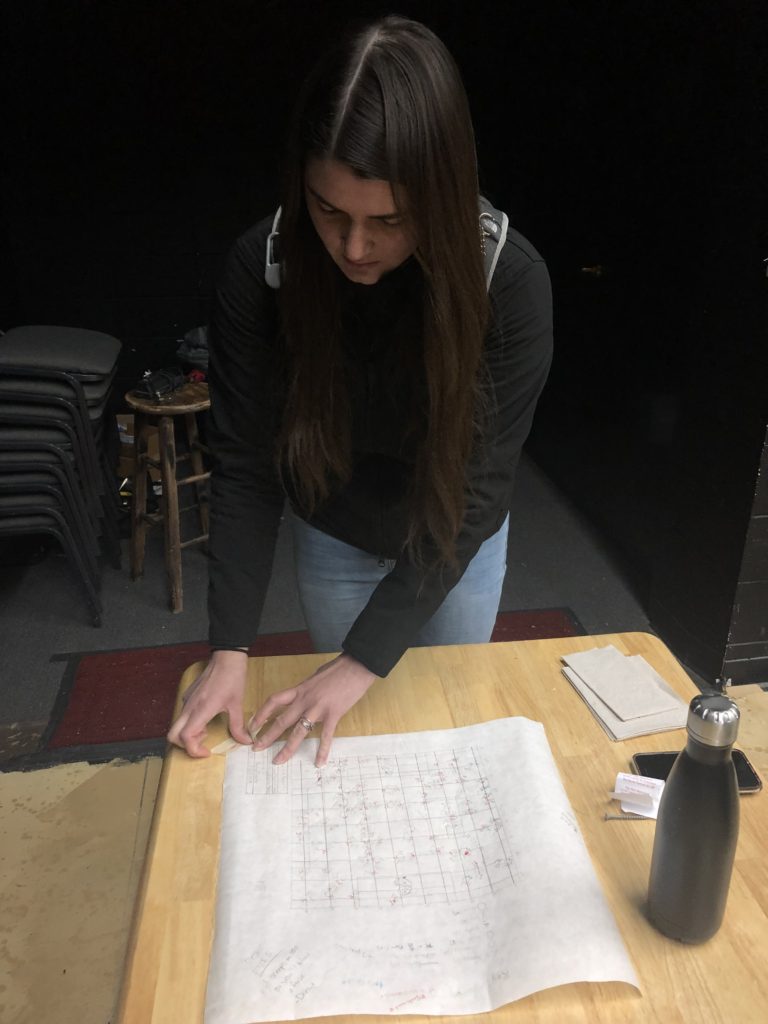
taken by Myranda Levins
5. Create the light plot
“The light plot is a drafting that includes the ground plan of the set, the lighting grid, the lighting areas, and where the instruments will be hung” It took Allen and Jacob Maher, the other lighting designer, 4 hours to create the light plot.
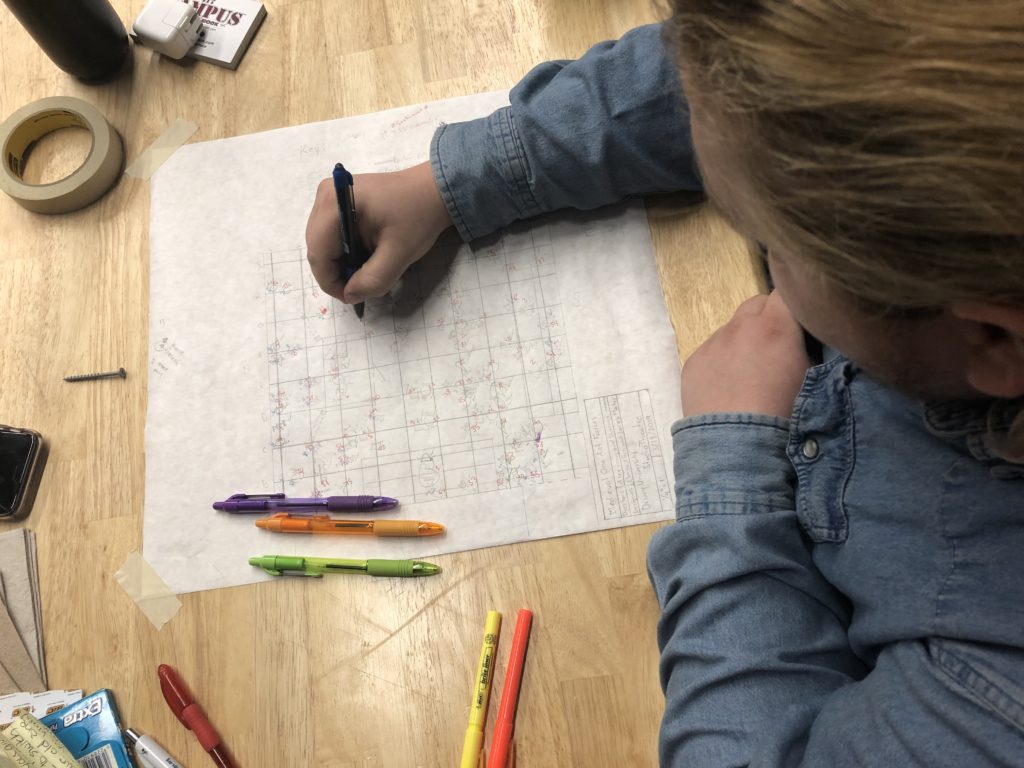
6. Hang the lights
This is the point where all the designs come to life from paper. Hanging the lights includes getting all the lighting instruments and attaching them to the grid, a system of pipes above the stage.
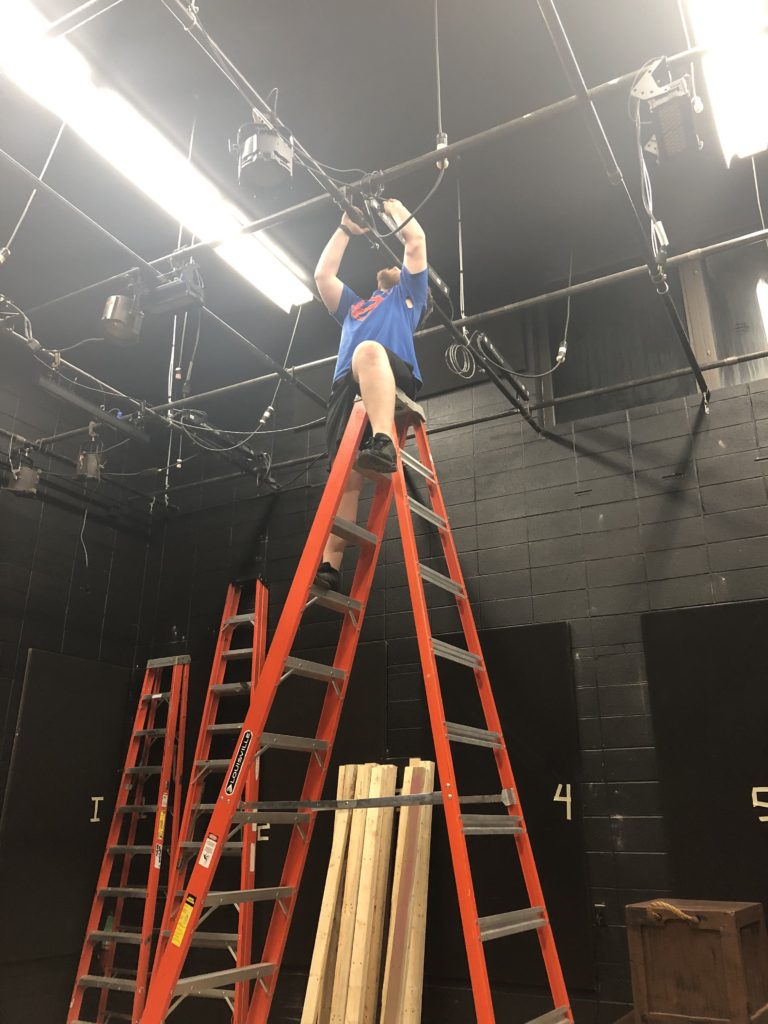
7. Focus the lights
“This includes making sure the lights are angled the way we want and making sure they are hitting the correct spaces”

8. Write cues
Cues are the thing that makes certain lights come up for certain scenes.
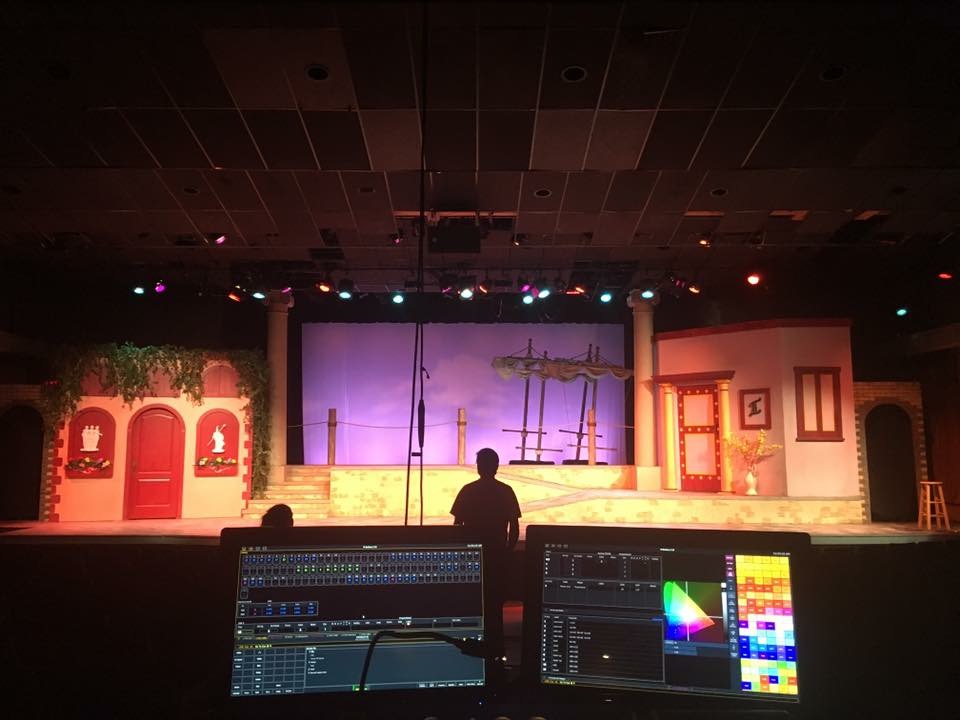
taken by Myranda Levins
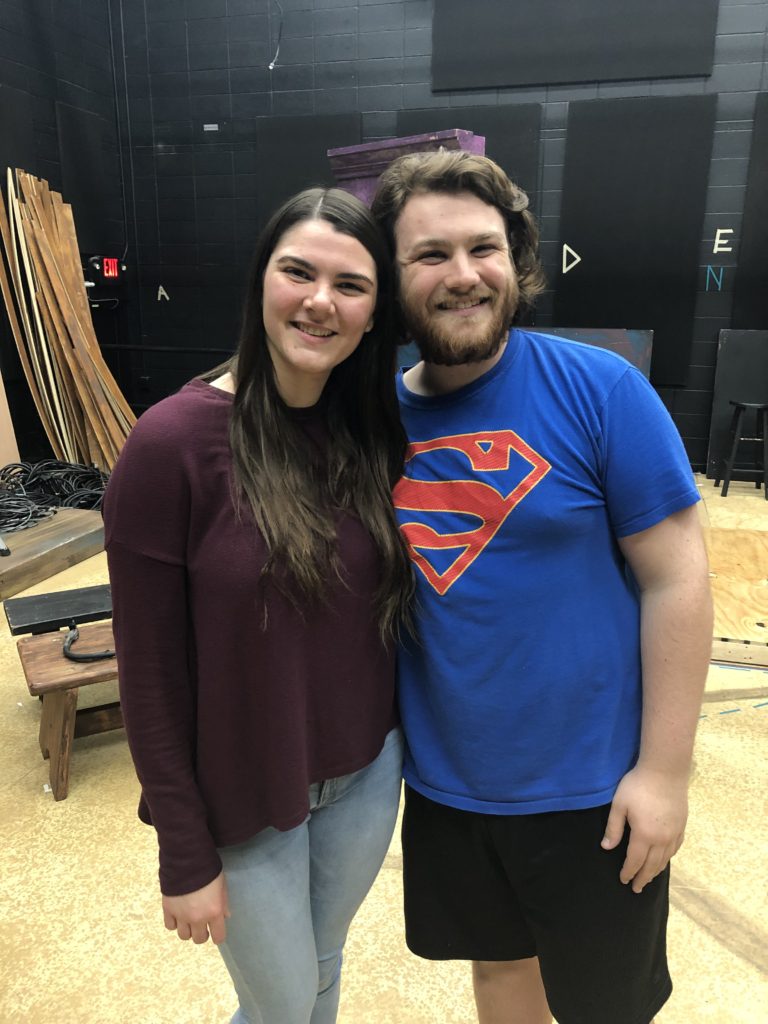
photo taken by Myranda Levins
There will be differences between shows, but this is the starting procedure for designing lights for a show.